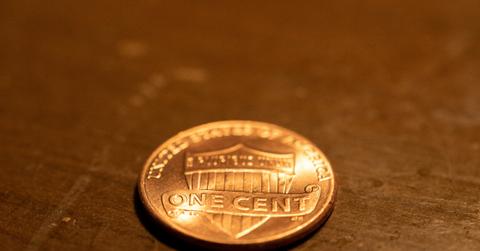The Penny Challenge Could Help You Meet Your Savings Goals
What is the penny challenge? Among many savings challenges out there, the penny challenge is a fun one that could help you save more than you expect.
March 21 2023, Published 3:06 p.m. ET

Many need a little push in order to save money. While it's important to automate investments intended for retirement if possible, there are also times when you simply want to save a bit of money for a specific cause. What is the penny challenge, and how could it help you save money?
If you're a devotee of money-saving challenges like a no-spend month or saving every $1 bill you receive, consider the penny challenge. The penny challenge is a trick that anyone can use to save money by following a pattern, and it starts tiny: just save a penny on the first day.

How does the penny challenge work?
As Tom Koesternen, Chartered Financial Analyst for TheGuaranteedLoans, explains, the challenge was created by Ryan Trahan. "The penny challenge works by setting aside one penny in a jar on the first day of the savings period." Sounds easy enough, right? After that, simply increase the saved amount by another penny every day.
You might wonder why we still have pennies, given their small value. But a penny is just the starting point for this challenge. On day two, increase your savings to two cents, and on day three, save three cents, and so on. You could theoretically keep doing this as long as you want, but many like to run it for a full year.
As The Penny Hoarder points out, this challenge doesn't hold any magic if you only save one penny every day. (You'd end up just $3.65 richer at the end of the year!) The key is increasing the savings (the amount you deposit) by one cent every day for an entire year. Here's how the math works out by days:

- Day one – save $0.01, your total is $0.01
- Day two – save 2 cents, total is $0.03
- Day three – save 3 cents, total is $0.06
- Day four – save 4 cents, total is $0.10
- Day five – save 5 cents, total is $0.15
- Day six – save 6 cents, total is $0.21
- Day seven – save 7 cents, total is $0.28
By the end of the challenge, if you keep it up for an entire year, on the last day you would deposit another $3.65 in the kitty.
How much can I save using the penny challenge?
If you follow the add-a-penny pattern every day for a full year, by year's end, you'll have a substantial amount of $667.95. The amount makes the penny challenge a useful tool for someone who needs to save a modest amount for a certain goal, like buying new office equipment, saving for a weekend trip, or starting your emergency fund.
You can also adjust the basic penny challenge to suit your savings needs. For example, some like to do a 52-week challenge in which you save $1 weekly and increase the amount by $1 each week. Week one, you'd deposit $1, and every following week deposit the same number of dollars as the week's number. In week 52, you'd deposit $52, and your total amount saved over the year equals $1,378.
How can people stay motivated throughout the penny challenge?
As Koesternen explains, motivation during this challenge may be tough. He says, "The crucial aspect is to drop the money every day into the jar." Setting up a smartphone reminder may be a great way to keep you on track too.
You might ask a friend to hold you accountable through daily text messages, keep a visual reminder of your savings on a chart, or commit to just a month first before you plan to complete the year's challenge.

Will the penny saving challenge work for me?
It depends on your savings goals. If $667 is a good amount for you to save for a specific goal in a year, then go for it. Some people thrive on using a gimmick or hack to save money, such as increasing savings by a penny every day. If you use coins and like the idea of physically depositing change into a jar every day, that's great. However, you might be more likely to save by setting up an automatic savings plan with your bank.
Many prefer automated savings because it's convenient (no messing around trying to find coins in an increasingly digital world), and you can "set it and forget it." Simply arrange an automatic deposit from your checking account to a high-yield savings account, if available. You could break the challenge down however you wish (pennies at a time won't be very practical with digital banking).
Simply estimate the amount you would like to save for a particular goal and the date when you need to have the money. Divide the total amount by the number of weeks or months, and that's how much you should deposit at those intervals. Here's how much you'd have in a year after saving certain ways:
- Save $15 a week to get $780
- Save $25 a month to get $300
- save $50 a month to get $600
Consider some examples of savings goals you could hit using some form of the penny challenge:
- $667 is a nice starter emergency fund, and you can then keep it going until you have $1,000.
- This blog suggests doubling the challenge it to two cents on day one, four cents on day two, and so on to save $1,335.90 in a year.
The penny challenge isn't great for major savings goals, like a down payment on a house which is likely tens of thousands of dollars (although if you increase the amount from pennies to dollars, that would get you closer).
The penny challenge is best for someone who likes a daily reminder to save and is saving for a modest goal, like a two-night hotel stay, an upgraded smartphone, or a small emergency fund.
